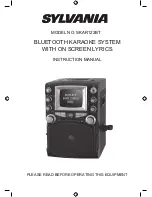
collector supply and return lines on sunny days.
In a single tank system the tank thermometer
will read the temperature of the water after the
mixing valve feeding your fixtures. In two tank
systems the thermometer will read the finished
solar tank temperature.
4. Check Valve: This valve is installed to stop
or minimize convective evening heat loss in
the system. The heat in the solar storage tank
will rise through the collector loop piping in
the evening into the much cooler solar collec-
tor and dissipate heat unless prevented from
doing so by a check valve. Check valves are
also sometimes referred to as one way valves
or non-return valves. A separate check valve is
not required if there is an integral check valve
within the pump.
5. Isolation Ball Valve: Used in conjunction
with component No. 14 to isolate the solar col-
lector loop from the solar storage tank.
6. Pressure Relief Valve: Will discharge heat
transfer fluid from the collector closed loop at
the PR Valve pressure setting (typically 75 -
150 PSI). If this valve opens and HTF fluid is
expelled contact your contractor immediately.
This valve also can be opened to drain the HTF
from the charged glycol loop and may be used
to manually purge air from the collector loop.
The PRV protects the collector and all com-
ponents in the collector loop from pressures in
excess of the PRV pressure setting.
WARNING: THE PRESSURE RELIEF
VALVE SETTING MUST NOT BE HIGHER
THAN THE MAXIMUM WORKING
PRESSURE OF THE COMPONENTS IN
THE COLLECTOR LOOP.
7. Pressure Gauge: Indicates the pressure in the
charged Propylene Glycol collector loop.
8. Expansion Tank: Pre-charged with air to
allow for the expansion and contraction of the
HTF as it heats and cools, thus maintaining the
entire collector loop pressure within the design
parameters.
9. Charge Valve: Used to charge the collector
loop with Propylene Glycol and also to elimi-
nate air from the system.
10. Isolation Ball Valve: Used in conjunction
with component No. 5 to isolate the solar col-
lector loop from the solar storage tank. Also
used with the charge valves to fill and pressur-
ize the collector glycol loop (Nos. 9 and 11).
11. Drain/Purge Valve: Used to charge the col-
lector loop with glycol, purge air from the loop
and drain the heat exchange fluid.
12. Isolation Ball Valve: When closed in con-
junction with No. 14 will isolate the circulation
pump for repair or replacement.
13. Circulating Pump: Circulates the HTF
through the collector loop.
14. Isolation Ball Valve: Used in conjunction
with component No. 5 to isolate the solar col-
lector loop from the solar storage tank.
15. Flush Valve: Used to drain the solar storage
tank and to flush sediment from the tank on an
annual basis.
16. Tank Sensor (T2): Wired to your controller.
Works in conjunction with the collector sensor
to turn your circulating pump on and off at pre-
set temperature differentials.
17. Cold Water Dip Tube: Forces incoming city
cold water to the bottom of the solar storage
tank to prevent mixing with the warm water at
the top of the tank.
18. Differential Temperature Controller:
Automatically turns the circulating pump on
and off when there is sufficient heat to be
gained from the solar operation. The controller
also may be set to limit high temperature build
up in the solar storage tank.
19. Heat Exchanger: Transfers heat from the
solar collector loop to the potable water in
the solar storage tank. The heat exchanger is
double walled and vented. If a leak in the heat
exchanger piping occurs there is no possibility
that the potable water in your solar storage tank
P.29
















































